Australind Steam Shipping Co. Ltd. And Avenue Shipping Co. Ltd.
Trinder is an old English surname for the profession of spinner or braider. Oliver Jones Trinder (1843-1913) was born as the son of William Henry Trinder and Sophia Hubbard, and may have had spinners or braiders in the family history. However, Oliver Jones Trinder and his partner J. R. Anderson were destined to become important pioneers of the Australian trades, after first working as young men in the offices of Anderson, Anderson & Company, managers of Orient Line. They left in 1874 to form their own company of Trinder, Anderson & Company and acted as loading brokers, passenger and transported convict agents for a large number of three masted sailing ships in the Australian emigrant trades.
These included Alexandra of 1863, Arafura (ex Bertha Marion) of 1864, Arabella of 1876, Ascalon of 1868, Atma of 1877, Barunga (ex Apelles) of 1863, Duncan Coupland of 1877, East Croft of 1875, Gwalla of 1869, Helena Mena of 1876, Harold (ex Hornby Castle) of 1877, Kooringa of 1874, Kapunga of 1875, Kingdom of Saxony of 1864, Lamorna of 1867, Minero of 1866, Morialta (ex British Consul) of 1866, Niola (ex Times) of 1868, Oriana of 1864, and Wasdale of 1881. Trinder, Anderson & Company acted as loading agents for many famous lines including Elder Line, Blue Anchor Line, Devitt and Moore, and others, with four ships, Atma, Kapunda, Oriana and Suffolk, clearing the Thames in March 1881 for Australian ports, particularly Adelaide. The last sailing ship that Trinder, Anderson & Company loaded as outwards agents for Australia was Wasdale when she sailed from London in 1907, and they back loaded her with wool at a very profitable freight rate.
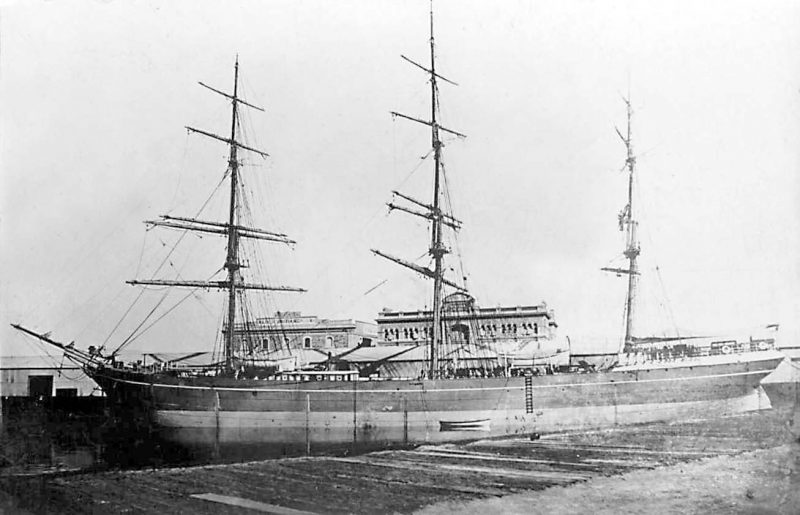
steamship Samarinda.
Oliver Jones Trinder made a business trip to Australia in 1885, and in Fremantle in March of that year he was elected a Fellow of the Royal Colonial Institute along with Sir Frederick Napier Broome, who gave his name to the port of Broome, and Colonel E.C. Sim. He then acquired the business of Oliver & Wilson of Fremantle to enter the trade from Western Australia to Singapore, and later in that year set up the West Australian Steam Navigation Co. Ltd. in 1886. The first vessel of the new company was the new steamer Australind of 1,018 grt built by Blackwood & Gordon on the Clyde at Paisley and powered by a triple expansion steam engine. She was registered at Fremantle for owners W.D. Moore, Shenton and Bethell, but transferred to the W.A.S.N. in 1887. She served the Fremantle to Singapore route for many years in a passenger and cargo capacity taking in many of the smaller Australian ports along the way. She had accommodation for forty First Class passengers in cabins extending from the engine room to the poop, and with the Dining Room placed across the ship in front of the cabins. Twenty steerage class passengers were accommodated in the fo’c’stle, and eighty horses were accommodated in stables in the holds. She had a length of 225 feet, beam of 32 feet, with a depth to the Main Deck of fourteen feet.
In 1892, Charles Bethell formed a partnership with Walter J. Gwyn as Bethell, Gwyn & Company, and became joint managers of the W.A.S.N. along with Trinder, Anderson & Company. Charles Bethell and Trinder, Anderson & Company had also earlier begun a twice monthly service of their own from Fremantle and Albany to the U.K. from 1886.
Australind Steam Shipping Co. Ltd.
In 1904, Trinder, Anderson & Company and Bethell, Gwyn & Company jointly founded the Australind Steam Shipping Co. Ltd. for trading between Western Australia and South East Asia, hence the name of Australind (Australia-Indies). It took over the business of the W.A.S.N. and larger steamers were immediately ordered for the new company. Trinder, Anderson & Company acted as managing owners and agents for this company until 1984, and for the New Zealand Shipping Co. Ltd. for ships assigned to MANZ Line (Montreal to Australia and New Zealand) between 1936 and 1966, and for the Avenue Shipping Co. Ltd., registered on 4th September 1954 as a subsidiary of the New Zealand Shipping Co. Ltd. to operate non-fully reefer ships.
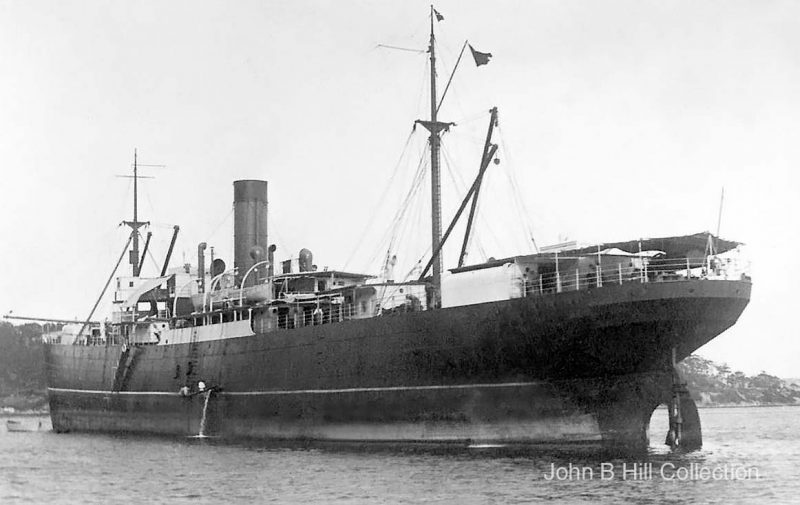
Five new steamers were completed in eight years from 1904 for the Australind Steam Shipping Co. Ltd., namely Australind 4,251/04 from the Connell yard on the Clyde, Ashburton 4,445/05 from William Denny & Brothers of Dumbarton, Arrino 4,484/06 from D. & W. Henderson of Glasgow, Armadale 6,153/09 from the Connell yard, and Ajana 7,753/12 from the Port Glasgow yard of Russell & Company. Ajana was of 10,400 dwt on dimensions of length 454 feet and beam of 56.3 feet with refrigerated capacity in her holds, and was powered by twin quadruple expansion steam engines driving two propellers to give a service speed of thirteen knots. The four earlier steamers had dimensions of 383 feet length by fifty feet beam, and all were shelterdeckers with deep framing, and were powered by triple expansion steam engines to give a good service speed of twelve knots.
Oliver Jones Trinder married Emily Florence Lake in 1875 and they had six children, Helen Florence (1876), William Henry (1877), Arnold Anderson (1879), Oliver Bruce (1880), Olive Muriel (1884) and Janet Kathleen (1886). It was Arnold Anderson Trinder who was destined to take over the management of the Australind Steam Shipping Co. Ltd. after the death of his father on 24th October 1913 at Kingswood in Surrey. Arnold Anderson Trinder married Christine Mary Wood and they had five children including Arnold Charles Trinder, born 15th June 1906, who also joined the management company and made frequent business trips to Australia on Port Line vessels during the inter-war years.
The Federal Steam Navigation Company was the largest single shareholder of the Australind Steam Shipping Co. Ltd. at the time of the death of Oliver Jones Trinder, the founder, although the majority of the shares were held by the families of the two partners. The steamer Norfolk of 5,310 gross tons was completed in 1900 by the Sunderland Shipbuilding Company as a Federal Line ship and in their colours, but she was owned financially by the Trinder, Birt, Potter, Bethell and Gwyn families. She caught fire on 8th November 1914 en route from Melbourne to Sydney and drifted ashore on Ninety Mile Beach to become a total loss.
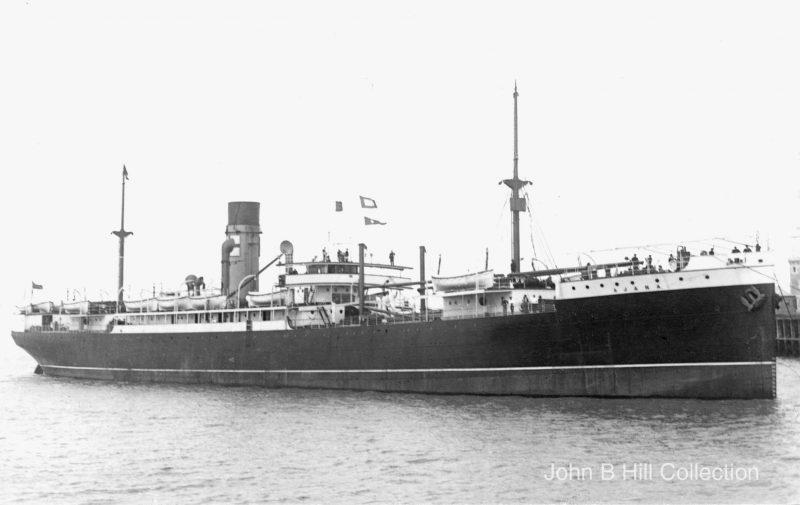
Shortly after the outbreak of World War I, both Ajana and Armadale were taken up by the Australian Government as troopships and became HMAT Ajana and HMAT Armadale. Ajana was the larger ship and carried seventeen Army officers, 410 troops and 304 horses as part of the Australian Expeditionary Force to the Gallipoli campaign. On 8th July 1916, she sailed from Melbourne with the Ninth Field Company Engineers, but was released from Government contract on 12th May 1917. She was a lucky ship, being missed by a torpedo on 14th April 1917, and escaping by her superior speed on 29th July 1917 off North West Ireland after being chased by a U-boat. Three ships were not so lucky:-
Ashburton was captured and torpedoed in the English Channel 80 miles WNW of Ushant on 1st April 1916 by U44 while on a voyage from Wellington and Montevideo to London with general cargo and wool.
Armadale was torpedoed and sunk in the Atlantic 160 miles NW of Tory Island on 27th June 1916 by U60 while on a voyage from Manchester to Salonica with Government stores, 11 crew lost.
Arrino was torpedoed and sunk in the English Channel fourteen miles WNW of the Ile de Vierge by U90 on 1st February 1918 while on a voyage from Brest in ballast.
These three losses were made good in 1919 by the purchase of three second hand steamers from the fleet of James Warrack & Company of Leith in Atholl 4,647/01, Errol 4,465/05 and Montrose 4,452/05. The Leith company was lucky to dispose of its fleet in good time to avoid the serious slump in freight rates of 1920/21 after a short boom. Arnold Anderson Trinder was managing the Australind Steam Shipping Co. Ltd. at this time with his partner W.G. Guthrie from the Baltic House at 27, Leadenhall Street in London. Ajana of 1912 was sold to the New Zealand Shipping Co. Ltd. on 25th November 1919, and in 1920 was renamed Otarama. Errol and Montrose were sold in 1924 to the Shakespear Shipping Company of Glover Brothers, and Atholl followed in 1929 to Italian owners and was renamed Antonietta. This temporary trio were replaced by three new shelterdeckers in Ashburton 5,047/26, and the sisters Australind 5,020/29 and Armadale 5,066/29, all products of the Denny yard at Dumbarton.
The motor ship Ashburton had been built on speculation as the Denny yard had no orders in 1926 and was launched on 24th August of that year as Yomah for the Yomah Co. Ltd. with Paddy Henderson & Co. Ltd. as managers. She sailed on charter to Commonwealth & Dominion Line (later Port Line) on her maiden voyage to Australia and New Zealand via the Panama Canal, and strenuous efforts to sell her during this voyage resulted in her renaming as Ashburton at London on her return. Arnold Anderson Trinder was so pleased with his purchase that he ordered two flush decked near sisters for delivery in 1929 as Australind and Armadale. This later pair was of 9,520 dwt and of overall length 425.4 feet, moulded beam of 54.2 feet, and loaded draft of 26.4 feet, and was powered by six cylinder two stroke single acting Sulzer diesel engines by the builders to give a service speed of 11.5 knots. They had two full shelterdecks with a third deck in numbers one and three holds.
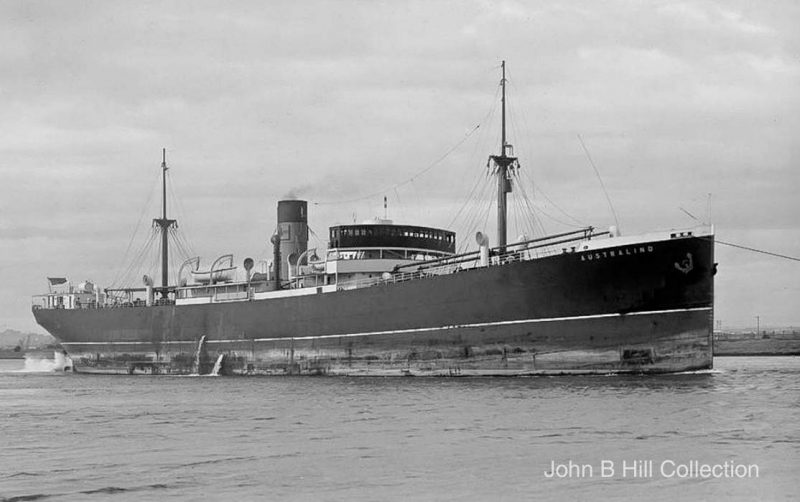
One further steamer was managed by Trinder, Anderson & Company during the inter-war years in Minderoo of 2,720 grt, and she had been launched on 9th March 1909 at the Connell yard in Glasgow for joint management with Bethell, Gwyn & Company for the West Australian Steam Navigation Co. Ltd. Unfortunately, she stranded in early 1936 on a Port Hedland sandbank and was badly damaged, and after refloating was broken up at Kobe in August 1936. The West Australian Steam Navigation Co. Ltd. then ceased operations on the Singapore service, and it was taken over by Blue Funnel Line in 1936 with their classic vessels Gorgon and Charon, as they had run the service jointly with the West Australian Steam Navigation Co. Ltd. since 1933.
The London and other U.K. ports to Australia service of the Australind Steam Shipping Co. Ltd. was maintained during the difficult early years of the Depression by three new motorships, and was joined in October 1931 by a managed sister vessel, Ardenvohr. She was owned by her builders Denny Brothers and had been laid down in 1931 as a speculation as the yard had no orders. She was managed by Trinder, Anderson & Company and was equipped with telescopic top masts of Oregon pine for passages of the Manchester Ship Canal, as well as more powerful eight cylinder Sulzer diesels to give a service speed of twelve knots. She was transferred to the ownership of the New Zealand Shipping Co. Ltd. in September 1937 for the new MANZ Line service from Montreal, Canadian and Eastern Seaboard ports to Australia and New Zealand, and was renamed Kaimata after a couple of voyages.
MANZ Line had been formed on 6th August 1936 by New Zealand Shipping Co. Ltd., Ellerman & Bucknall, and Port Line, and initially used ten steamers purchased from Canadian National Steamships, which proved unsuitable, and the three partners then used their existing or new ships for the service. A further trio of Trinder, Anderson & Company managed and New Zealand Shipping Co. Ltd. owned vessels was transferred to MANZ Line in Kaikoura 5,852grt/37, Kaipara 5,852grt/38 and Kaipaki 5,862grt/39 of around 9,750 dwt to 9,950 dwt. Kaikoura and Kaipaki came from the yard of Alexander Stephens at Linthouse, while Kaipara was built at Sunderland by the Doxford yard, and all were fitted with four cylinder two stroke single acting Doxford oil engines of 4,250 bhp to give service speeds of thirteen knots. A further motorship of 9,165 dwt was completed for MANZ Line service by the Eriksberg yard at Gothenburg in December 1938 as Kaituna for the management of Trinder, Anderson & Co. Ltd.
Trinder, Anderson & Company owned four ships and managed a further five ships on the outbreak of war on 3rd September 1939. Ashburton of 1927 had been sold to Skibs A/S La Plata in 1937 and renamed Tropic Star, and was replaced by a new motorship Ardenvohr of 9,000 dwt, launched from the Denny yard on 23rd July 1940 and completed three months later. The fourth owned vessel was Tolten of 5,342 grt laid down by Lithgows at Port Glasgow in 1930 for Compania Sud American de Vapores of Chile but never delivered. She was purchased by Trinder, Anderson & Co. Ltd. in 1938 while still trading to South American ports, and after three years was sold to the South American Saint Line and renamed St. Merriel in 1945.

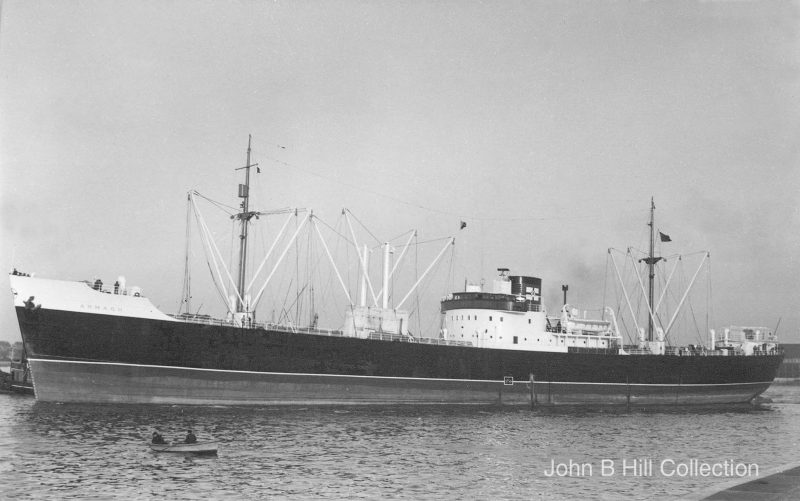
Australind was proceeding on her lawful voyage from Australian ports to the U.K. via Panama on 14th August 1941 with a full cargo of dried fruit, zinc concentrates and general cargo when she was stopped by the raider Komet off the Galapagos Islands in position 4° 13′ South, 91° 03′ West. Shells from the raider’s six inch guns rained down on the cargo-liner, horribly injuring and killing her Master (aged only 29 years), and Third and Fourth Engineers. The rest of the 44 crew and one gunner, including the injured, were taken onboard the raider and put below decks so that they could not see their vessel blown up with the dead still on board. They became prisoners of war in Germany after Komet had returned to Hamburg at the end of a successful cruise in which she sank seven ships. Komet was later sunk on 14th October 1942 off Cap la Hague by a flotilla of MTBs while leaving on her second sortie.
Ardenvohr was sunk by U68 within two hundred miles of the Panama Canal while sailing independently after dispersing from her convoy in the Yucatan Channel on a voyage from New York and Hampton Roads to Sydney and Melbourne with munitions, tanks, guns, machinery and general cargo. Surrey of Federal Steam Navigation Co. Ltd. was sunk ten minutes later by U68, who also despatched Port Montreal of Port Line. The Allied naval headquarters at Key West did not know a U-boat was operating near the Panama Canal when the order to disperse the convoy was given. Seventeen survivors from Velma Lykes, sunk five days earlier, were also onboard Ardenvohr, but only one life was lost from her 44 crew and three gunners and Velma Lykes survivors. The two war losses were replaced by two similar vessels from the Denny yard at Dumbarton in 1944 and 1946 in Australind of 9,350 dwt and Ashburton of 9,433 dwt.
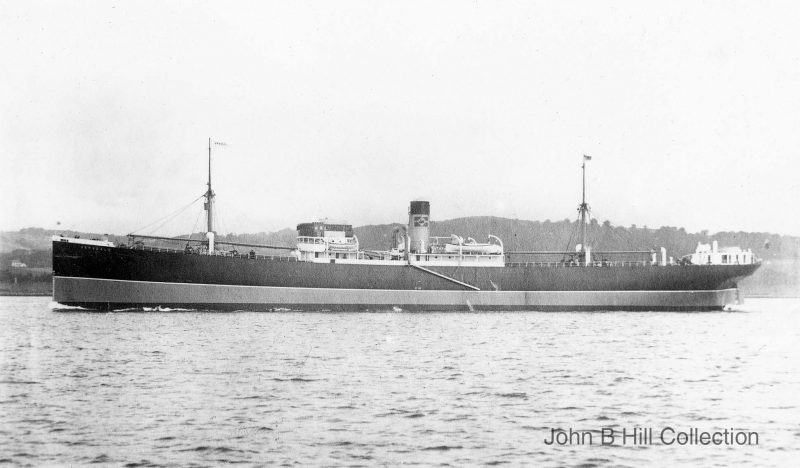
The fleet was thus restored to three owned cargo-liners in 1946 as Armadale of 1929 survived the war. One other managed vessel came to Trinder, Anderson & Company in 1947 as the standard ‘Fort’ type Ottawa Valley, completed in 1944 at Victoria (BC) for the Canadian Government. She was managed on the MANZ Line service for seven years until sold to Splosna Plovidba of Yugoslavia and renamed Rog. Ajana of 9,640 dwt was then delivered by the William Hamilton & Co. Ltd. yard at Port Glasgow in 1950 and was powered by a B&W diesel engine to bring the fleet up to four owned vessels, until Armadale of 1929 was sold in 1954 to Liberian owners and renamed Porvenir, and was broken up at Hamburg ten years later.
Araluen of 11,056 dwt was launched on 21st November 1957 and completed in April 1958 by the South Bank yard of Smith’s Dock Co. Ltd. with her Doxford diesel engine manufactured by the St. Peter’s works of Hawthorn, Leslie & Co. Ltd. at Newcastle. She had a big outfit of eighteen derricks and a heavy lift derrick over number two hold after she was lengthened by 56 feet in 1966 at Belfast, bringing her deadweight up to 13,126 tons. The delivery of Araluen allowed Australind of 1944 to be sold to A. Zubizarrela of Spain a year later and renamed Portalon. Similarly, the Bartram built Australind of 12,504 dwt with a loaded draft of thirty feet in 1961 allowed Ashburton of 1946 to be sold a year later to John Manners & Co. Ltd. of Hong Kong and renamed Pacific Breeze. The traditional trade of Trinder, Anderson & Co. Ltd. to Australian and New Zealand ports was beginning to slightly fall off in 1968, and future vessels were usually built for long term charter to other liner owners. Ajana of 1950 was sold in 1968 to Cypriot owners and renamed Kate A and then Pati later in the year, and sank off South Africa on 29th February 1976. Araluen was sold in 1971 and renamed Tai Shan, and then Rockferry in 1977 for Panamanian owners, and she continued in service until her arrival at Kaohsiung for breaking up on 26th October 1982.
The final quartet of cargo-liners completed for the Australind Steam Shipping Co. Ltd. came from the Sunderland yards of Austin & Pickersgill Ltd. as the SD15 Armadale of 1970, and the SD14s Arrino of 1974, Ajana of 1976 and Australind of 1978. In July 1978, Ajana was on charter to Persian Gulf ports, and Armadale was on charter to Lagos and Apapa from Hamburg, with Arrino and the new Australind on loaded voyages from Liverpool via the Panama Canal to Suva, New Zealand and Australian ports. However, Arrino was sold at the end of her voyage to Prekookeanska Plovidba of Yugoslavia and renamed Rumija. Ajana was sold in 1980 to Empresa Navegacion Mambisa (Cuban Government) and renamed Calixto Garcia, with Australind following later that year to the same owners as Maximo Gomez.
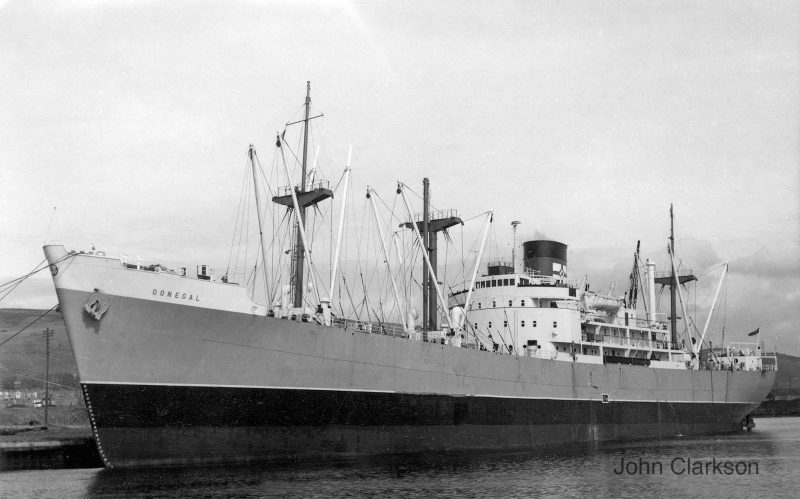
The difference in deadweight between the SD15 and the SD14 was only nine hundred tonnes, however the SD15 was 62 feet longer than the SD14 at 525 feet with a deadweight of 15,100 tonnes on a loaded draft of 30.3 feet as a closed shelterdecker, whereas the SD14 had a deadweight of 14,200 tonnes on a 29 feet loaded draft. The SD15 was given a much better array of derricks on three masts, and this design was later sold to Brazilian shipbuilders to become their ‘Prinasa 121’ design and was built in greater numbers of thirteen ships.
The SD15 Armadale made one of the last voyages of the company when she sailed from Sydney on 14th February 1981, and from Brisbane two days later, for Japan, as she was sold shortly afterwards on the news of the death of the Chairman, Oliver Geoffrey Trinder (1907-1981). He passed away in February 1981 at Sunninghill in Berkshire, and his brother Sir Arnold Charles Trinder, both grandsons of the founder, later died on 25th December 1989 at Whitwell Hitchin in Hertfordshire aged 83 years.
A final owned ship of the Australind Steam Shipping Co. Ltd. was the ore carrier Queensgarth built in 1959 at Blyth for the import of iron ore into British blast furnaces and steel mills. She was purchased from a Greek owner in 1981 and arrived in Singapore Roads on 23rd September 1981 to be converted into a drill ship, renamed as Australind, but was sold a year later and renamed Eniwetok. The black swan on the houseflag and funnel of the company relates to the native bird of Western Australia, and also appeared on both the houseflag and funnel of the West Australian Steam Navigation Company. However, their funnel was changed to black with two white bands, similar to that of British India Steam Navigation Co. Ltd. The black swan reappeared on a modified flag in 1904, with the houseflag of the Australind Steam Shipping Co. Ltd. as a panel on a yellow funnel with a black top.
Avenue Shipping Co. Ltd.
The Australind Steam Shipping Co. Ltd. had lasted almost eighty years in business, but the Avenue Shipping Co. Ltd. had a lifespan of less than half that period, with a ten year spell between 1924 and 1934, and a reincarnation of twenty years from 1954. In the first period of shipowning, only two ships were managed by the London shipbroking firm of Birt, Potter & Hughes under the Avenue Shipping Co. Ltd., the name derived from their address of 2, Fenchurch Avenue. Allan Hughes was the leading principal of the firm, and had started his career in the London shipbroking partnership of Allport & Hughes. He founded the Meteor Steam Navigation Company in London in 1892, and two years later purchased the remaining assets, goodwill and flag of Money, Wigram & Sons, for whom he had been their London broker. The company name was changed to the King Steam Navigation Company to match the names of its first ships, Celtic King and Maori King. In May 1895, the company name was changed again to the Federal Steam Navigation Co. Ltd. In 1912, the Federal fleet of ten ships was absorbed into the fleet of the New Zealand Shipping Co. Ltd. Allan Hughes became a director of the latter company, and Chairman in 1920, a position he held until his death on 18th July 1928.
Delivery of the new cargo ship Enton of 4,425 grt was taken in 1925 from the Haverton Hill shipyard of the Furness Shipbuilding Co. Ltd. on Teesside. She was equipped with a four cylinder two stroke single acting diesel engine manufactured by the Wallsend Slipway & Engineering Co. Ltd. However, after only five years of service, she ran aground and was wrecked on 28th January 1931 near Noumea and the southern tip of New Caledonia in the Pacific while on a voyage from New York to Lyttelton and Rabaul. This loss left only the two year old motorship Winton of 4,388 grt in the fleet. The latter had been completed in October 1928 by the Port Glasgow yard of William Hamilton & Co. Ltd. as a shelterdecker with five holds and two full decks in her hull and a duct keel forward of the machinery spaces, and she was equipped with an eight cylinder four stroke single acting diesel engine connected to a single shaft.
However, Winton also became a marine loss on 28th July 1934 under Capt. C. J. Mordaunt when she ran aground in heavy weather off Milnerton Beach in South Africa just to the north of Cape Town. She broke in two and her cargo of 6,000 tons of wheat caught fire and she was lost. She was on a voyage from Australia to the U.K. and Capt. Mordaunt had mistaken a red light on Milnerton Beach for the leading lights into Cape Town harbour. The Avenue Shipping Co. Ltd. had been wound up by the end of 1934.
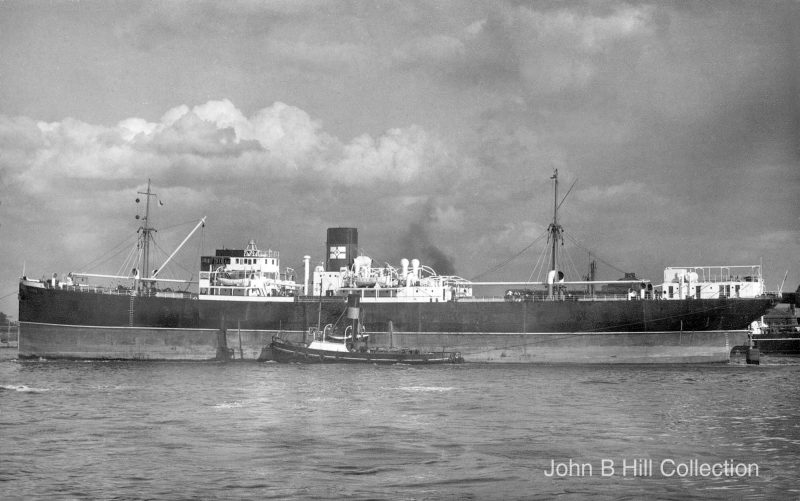
The company was revived on 4th September 1954 as a subsidiary of the New Zealand Shipping Co. Ltd., owned by P. & O., and managed by Trinder, Anderson & Co. Ltd. to operate non-fully reefer ships. The MANZ Line service had been updated by new ships, and Kaimata of 1931, Kaikoura of 1937, Kaipara of 1938 and Kaipaki were transferred to the new company and renamed Antrim, Tyrone, Roscommon and Westmeath respectively. The newer cargo-liner Enton of 9,890 dwt, completed in 1952 by Alexander Stephens & Sons Ltd. for Birt, Potter & Hughes Ltd., was also transferred to the new company and renamed Limerick. The intention for the new fleet was to augment the Federal and New Zealand Shipping Company fleets as required, and by using a firm outside the control of P. & O. as managers, it made it easier to charter the fleet out in the tramp trades. Antrim was sold off in 1957, and the fleet was brought up to seven vessels with the delivery in 1957 of the new Donegal of 9,920 dwt from the yard of Alexander Stephens & Sons Ltd. and the new Galway of 12,781 dwt from the South Bank yard of Smith’s Dock Co. Ltd. in 1959.
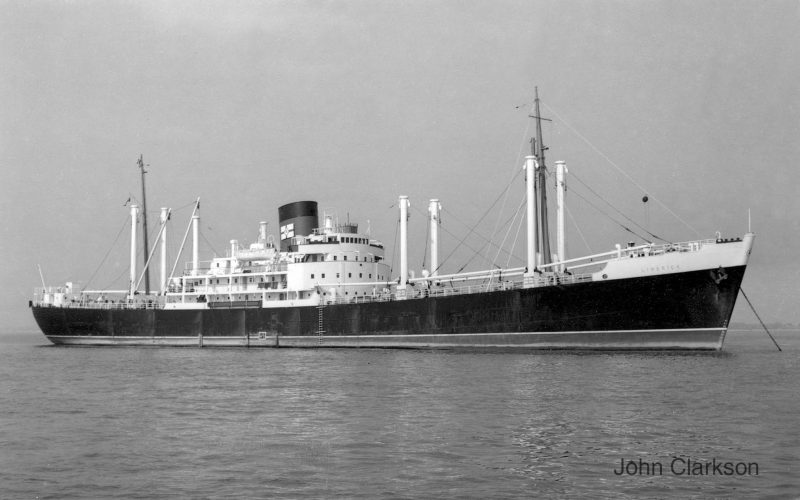
The year of 1959 was the busiest post-war year for Trinder, Anderson & Co. Ltd., with eleven modern vessels of a total of 108,000 dwt loading outwards for Australian ports, as well as for New Zealand ports, particularly Dunedin and Port Chalmers. The seven vessels of the Avenue Shipping Co. Ltd. loaded up with Trinder cargoes in the London Royal Docks alongside Ajana, Araluen, Ashburton and Australind of the Australind Steam Shipping Co. Ltd. It was a very busy time in the Thames, the like of which had completely disappeared two decades later, with only Tilbury receiving cargo for the Australasian trades in 1979. The directors of the Australind Steam Shipping Co. Ltd. in 1959 were Arnold Charles Trinder and his brother Oliver Geoffrey Trinder (1907-1981), who later became Chairman of the company.
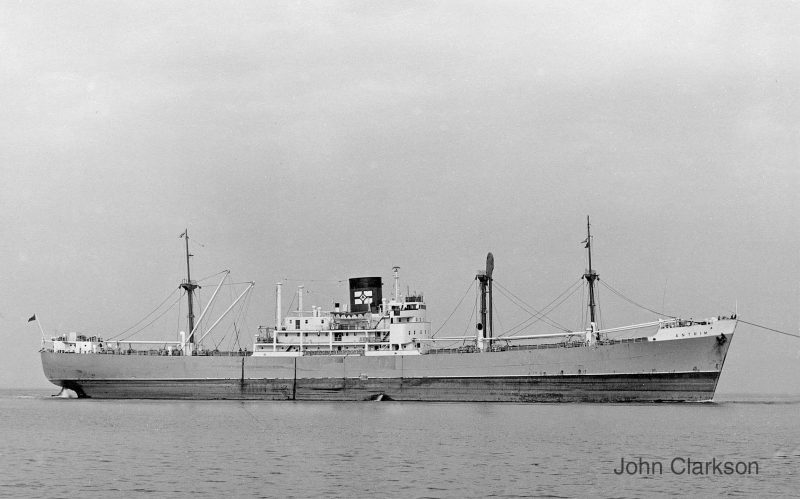
The fleet numbered four vessels in 1964 including the new Antrim of 10,300 dwt, launched on 19th January 1962 from the Linthouse yard of Alexander Stephen & Sons Ltd., but had reduced to three ships on 3rd September 1969 when Limerick was transferred to the British India Steam Navigation Co. Ltd. and renamed Howra. The fleet remained at this strength until the trio were transferred to the ownership of the P. & O. General Cargo Division on 1st October 1971. They retained their grey hull, and distinctive funnel colours and names for voyages to Australia and New Zealand until the Spring of 1975, with Antrim loading at Sunderland on 14th April 1975 and other east coast ports including Tilbury, where she was renamed Strathinch in May 1975. Donegal was renamed Strathirvine on 13th June 1975, and Galway was renamed Strathinver six days later. The conventional ships of the Avenue Shipping Co. Ltd. were no longer needed in the age of containerisation, and the company was renamed as P. & O. Overseas Holdings Ltd. in 1976.
The fleet of the Avenue Shipping Co. Ltd. proudly flew their own houseflag on the mainmast and that of the Australind Steam Shipping Co. Ltd. on the foremast, particularly in the last years of the company. Their own white houseflag had a blue cross with a blue ‘A’ in the central white diamond, and like that of the Australind Steam Shipping Co. Ltd. appeared as a panel on their red funnels with a black top. These two flags were very attractive, as was that of the Federal Steam Navigation Co. Ltd., which was taken from the original flag of Money, Wigram & Sons Ltd.
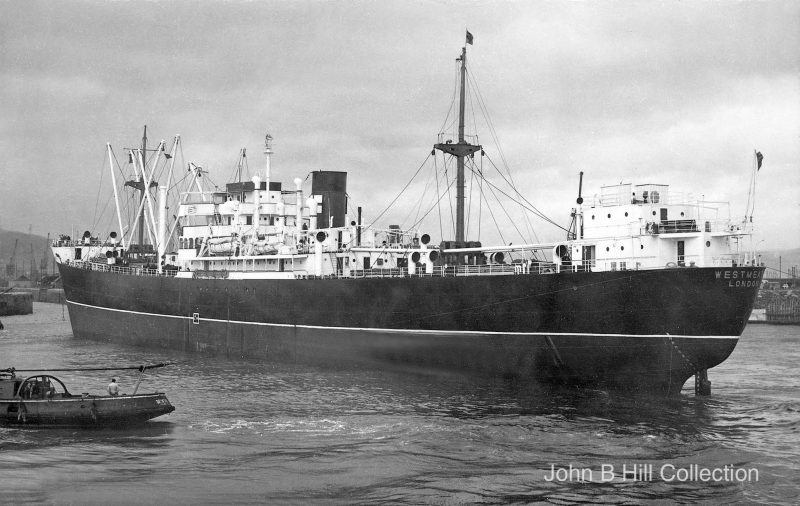
POSTSCRIPT
Birt, Potter & Hughes Ltd. later formed an association with Panocean Tankers through joint ownership with Cory Maritime Ltd. of five coastal tankers with names such as Pass of Balmaha, Pass of Brander, some having been built originally for the Bulk Oil Steam Ship Co. Ltd. of London. Birt, Potter & Hughes Ltd. was eventually dissolved on 10th November 1998 after one hundred years in business. Trinder, Anderson & Company had been converted into a limited liability company on 24th November 1952, and the company records were presented to the National Maritime Museum by Peter G. Trinder during 1984, with the company later dissolved after well over one hundred years in business. The SD15 and three SD14s were ideal ships for the Australian trade, but by 1981 the world of liner shipping had moved on to full containerisation. The total number of ships of the Australind Steam Shipping Co. Ltd. and the Avenue Shipping Co. Ltd. was not large, but they represented the best of the smaller liner fleets of the British Merchant Marine.
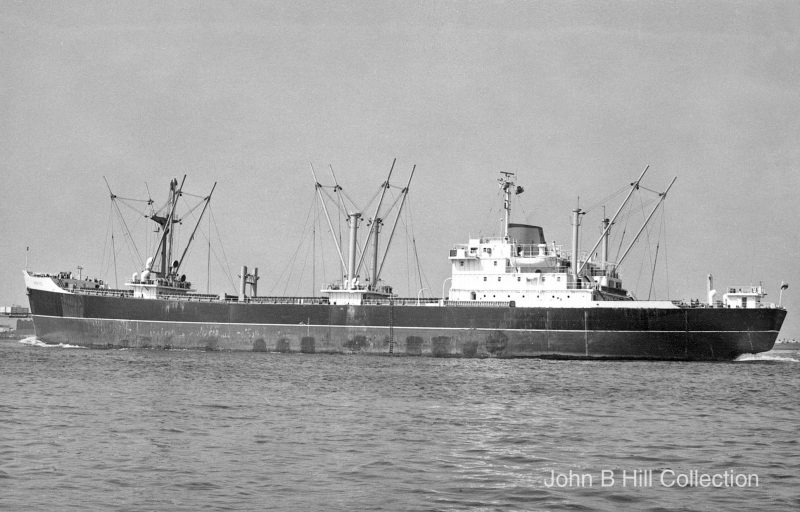

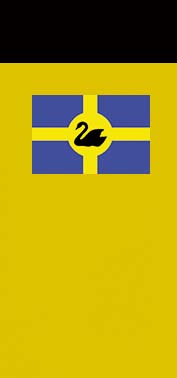
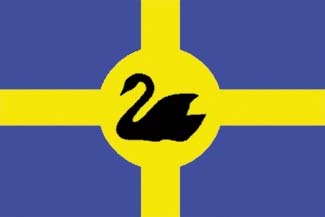
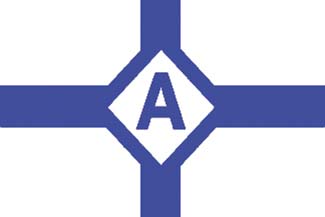

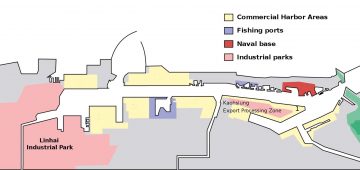



Comments
Sorry, comments are closed for this item